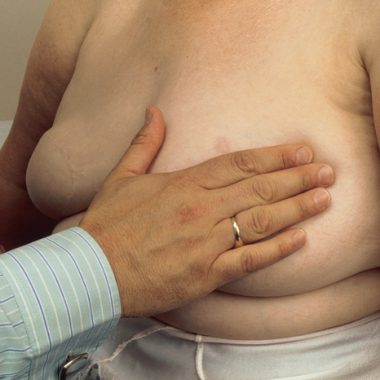The increase in risk of breast cancer linked to use of combined hormone replacement therapy is likely to have been underestimated, researchers have claimed.
Their study found women who used combined hormone replacement therapy (HRT) for around five years had nearly three times the risk of breast cancer relative to women who never used HRT.
The research team, led by Dr Michael Jones at the Institute of Cancer Research in London, said the risk was higher than in other published studies and that this was likely to be because their analysis included better follow-up on timing of HRT use and the women’s menopausal status.
But GP experts said the findings simply underscored NICE advice that combined HRT – containing both oestrogen and progesterone – is associated with an increased risk of breast cancer, and that GPs need to discuss the potential risks with women who are thinking about starting treatment for menopausal symptoms.
As NICE previously advised, the study found no increased breast cancer risk with use of oestrogen-only HRT.
The research – published in the British Journal of Cancer – was part of the Breast Cancer Now Generations Study, and followed up some 39,000 women with questionnaires on HRT use as well as general health and lifestyle.
The findings indicated that the risk of breast cancer from combined HRT was greater the longer women used this form of HRT, with those who took it for 15 years or longer at just over three times the usual risk.
As previously observed, the risk of breast cancer went back to roughly normal levels a year or two after women had stopped taking the combined HRT.
The researchers concluded: ‘Our results show that risk of breast cancer increases with duration of use of combined [HRT] up to [at least] 15 years and relative risks in most of the published literature are likely to be substantially underestimated.’
It comes after NICE recently issued new guidance urging GPs to be more proactive about offering HRT to women, albeit including discussion of the potential increased risks of breast cancer and other complications depending on the type of treatment used. Based on randomised trials and observational evidence at the time of publication, the NICE advice says between five and 17 additional cases of breast cancer may be expected for every 1,000 postmenopausal women currently using combined HRT.
Dr Sally Hope, a GP in Oxford who advised on the NICE menopause guidelines, told Pulse: ‘I don’t think this changes anything. This confirms what the Million Women study and the Women’s Health Initiative study already have told women and health care professionals for over a decade about the definite increased risks of combined HRT.
‘Women must understand these risks before weighing up pros and cons of HRT. The Million Women Study also showed that more than two international units of alcohol per day doubled the risks of breast cancer, as does obesity and those two pieces of information never seem to get enough publicity, and many women do not understand the risks they are giving themselves by their lifestyle.’
Professor Mark Baker, director of the centre for guidelines at NICE, said the study confirmed what the NICE guidelines said – that ‘there is no increased risk of breast cancer with oestrogen-only HRT but the combined HRT can be associated with an increased risk of breast cancer’.
Professor Baker added: ‘The message from our guidance to women is clear – talk about the menopause with your clinician if you need advice on your symptoms – it’s very important to discuss the options to find what might help you.’
Br J Cancer 2016; available online 28 July
Breast Cancer Now Generations Study – risk of breast cancer with HRT
Over six years of follow-up, 775 (2%) of the total 39,183 women in the study developed breast cancer.
Among current users of HRT, 52 women taking combined HRT developed breast cancer, compared with 23 taking oestrogen-only HRT, and 15 among women taking other or unknown HRT.
Women using combined HRT for a median of 5.4 years were 2.7 times more likely to develop breast cancer during the period of HRT use as women who had never used HRT.
The risk increased with longer use – women who had used combined HRT for over 15 years were 3.3 times more likely to develop breast cancer than non-users.
The risk level returned to about normal after combined HRT use ended – within 1-2 years of stopping there was no significant increase in risk.
Women using oestrogen-only HRT had no overall increase in breast cancer risk.
Visit Pulse Reference for details on 140 symptoms, including easily searchable symptoms and categories, offering you a free platform to check symptoms and receive potential diagnoses during consultations.










